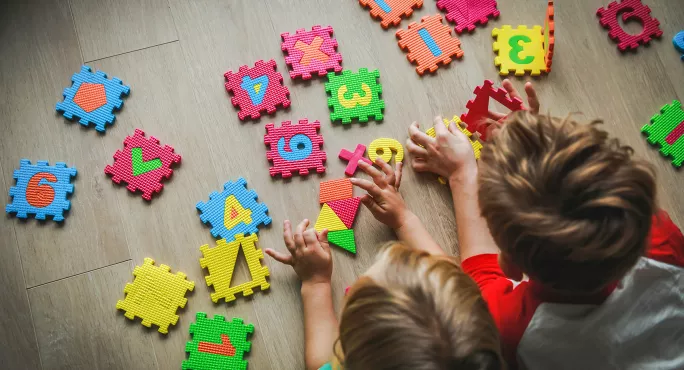- Home
- Teaching & Learning
- Early Years
- How to evaluate your classroom environment
How to evaluate your classroom environment

The learning environment is a critical part of early years pedagogy, and the Teachers’ Standards and Development Matters guidance outlines its importance clearly: “A well-planned learning environment, indoors and outside, is an important aspect of pedagogy.”
So how can early educators create quality learning environments? This is a specialist area of pedagogy with much to consider; environments must be language-rich, with organising principles understood by children. They should also be filled with numerals, connected to nature and offer suitable risk. We need colour, but not overstimulation, and they must be well-planned but with freedom for creativity and agency.
Fortunately, well-researched guidance exists to help navigate this tricky area. The Early Childhood Environment Rating Scale (ECERS-3) was first produced in 2005 by three academics at the University of Carolina: Thelma Harms, Richard M. Clifford and Debby Cryer, and it’s a great tool that simplifies all of this.
More EYFS:
- Are we getting ‘settling in’ all wrong?
- Why closing the gender gap starts in EYFS
- Why catch-up shouldn’t put pressure on parents
The ECERS-3 has been revised since 2005: in 2015, a new version was published that built on practitioners’ experiences and updated early childhood research. With the help of Professor Kathy Sylva at Oxford University, it was adapted for global use.
Today, it encourages reflection on play, cognitive and metacognitive development and instructional practice, and as a research-backed tool for evaluating settings, it identifies priorities for child-focused improvements.
ECERS-3: How to evaluate your space
So how does it work in practice?
The scale measures 35 categories across six areas (see below), and is easy to use. Clear descriptors are accompanied by examples. For instance, the descriptor “space for gross motor play” is accompanied by: “Gross motor space(s) has at least two types of play surfaces, one hard and one soft, so that different types of activities are possible.”
The scale also comes with clear guidance on conducting a three-hour environment observation. The idea is that descriptors are either observed, or not, and each one that is observed is given a rating from one (inadequate) to seven (excellent).
In our setting, the whole team conducted observations separately, before comparing results.
How effective is the scale, then? Well, considering that developing practice in EYFS often involves stopping, observing and reflecting, I can say that the ECERS-3 facilitates exactly that.
For me, the power of the scale is what it measures: interactions between adults, children and the physical space. It draws the important link between how a setting looks and how children interact with it, and helps teachers to understand how the use of space creates a learning environment.
Personally, I find that reflective observational tools often have a positive impact on my practice. But the ECERS-3 is much more than that. The systematic, detailed approach provides a clear evaluative structure; it builds links between what is working, and what isn’t, and pedagogy.
The scale also helps with prioritisation: we can view the big picture, or we can zoom in on actionable details.
Improving spaces: ECERS-3 in action
In my setting, the scale helped us to achieve three things. Firstly, it enabled me to identify improvement priorities based on children’s needs. We made our writing area more inviting, adults learned to show extended interest in fine motor skills, and we encouraged experimentation and varied the complexity of the materials available.
Secondly, it gave the team a shared language for our goals for the learning environment, and finally, it helped us to shape a long-term plan that we could agree with senior leadership.
This plan was founded on children’s interactions with the setting and their progress. We are able to refer back to it at every “mocksted” inspection, learning walk and drop-in session.
Eventually, leaders and the team developed a shared a sense of what the environment was for - and why it mattered.
Often, the urge to find quick fixes can be strong, but ECERS-3 encouraged thoughtful steps towards consistent meaningful interactions. We were empowered to prioritise children’s use of the space and, as is often the case in EYFS, we found that it was the interactions that mattered the most.
Polly Crowther is an English lead in Kent and co-founder of Early Insights
Register with Tes and you can read two free articles every month plus you'll have access to our range of award-winning newsletters.
Keep reading with our special offer!
You’ve reached your limit of free articles this month.
- Unlimited access to all Tes magazine content
- Save your favourite articles and gift them to your colleagues
- Exclusive subscriber-only stories
- Over 200,000 archived articles
- Unlimited access to all Tes magazine content
- Save your favourite articles and gift them to your colleagues
- Exclusive subscriber-only stories
- Over 200,000 archived articles
topics in this article



